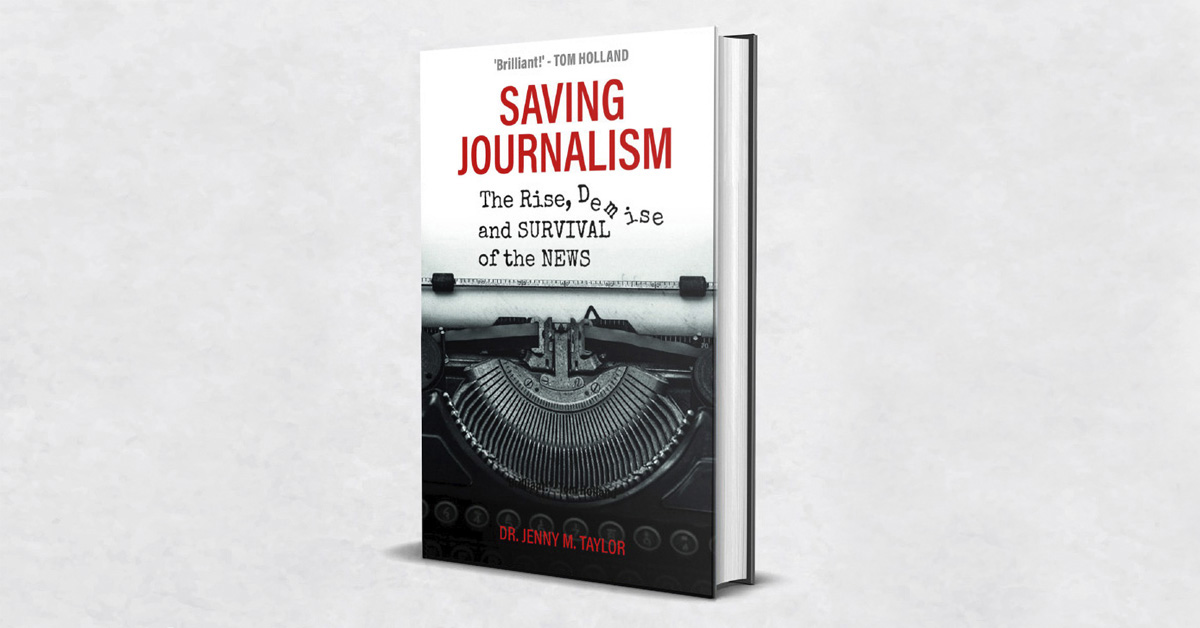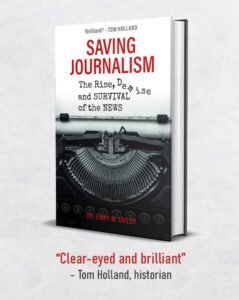
Read an excerpt of Jenny Taylor’s new book, Saving Journalism: The Rise, Demise and Survival of the News, and watch the videos of the launch event here.
* * * * *
I set up Lapido Media from my dining room in 2005 with one unpaid American missionary assistant and no budget. By the time it closed down, in 2017, we had raised more than £1 million in charitable funds and individual donations, employed five staff, were read in Downing Street, and were networked around the world.
Lapido means to “speak up” in Acholi, the language of Northern Uganda.
I had somehow found the nerve to make a phone call to former Sunday Telegraph editor—and, latterly, columnist for the Independent—Dominic Lawson to launch it for us. To my surprise, I got through to him direct—and, even more surprising, he agreed to help, without a clue who I was. We launched at Vaughan Smith’s prestigious Frontline Club for foreign correspondents in Paddington. We called the event “Neutrality or Truth: Reporting Religion Post-7/7”. It seemed to break the dam of reserve about how to write news in the tense aftermath of the London Underground bombings. Journalists were at that moment like rabbits in the headlights, unable to digest the recent catastrophic developments in terms of religiously motivated political violence. Multiculturalism was not supposed to be like this. Until this point, if all religions were the same, you were required to be “equal” about your coverage, which in fact meant not reporting the facts. Equality had wrongly come to mean “the same as”.
Did it mean treating the contemporary Archbishop of Canterbury, Rowan Williams, as if he were hook-clawed fundamentalist Abu Hamza?* Both had beards, both preached to their throngs, both could be apocalyptic.
Ludicrously, journalists honestly seemed not to know—and, if there were a difference, wasn’t it discriminatory and/or illegal to say so anyway? The event generated massive coverage in the national and international media, including half an hour on CNN’s Correspondents slot.
This was all vindication of my passionately held view that you could approach journalism from a perspective that took your own and others’ spirituality seriously, because it produced better stories. Real journalists do “get religion”, and they were often far more interested and sympathetic in private to what I was doing than people generally imagine.
It was no surprise to me then that I had an easier ride with journalists than with the Church, which—like any organization—tries to control the narrative when and where it involves them.
The rise of the free press and the “civil ideal” of the news is a story that needs fully retrieving for our time, but that has not been my task.
What I’ve tried to do is tease out those key moments when religion and the desire for freedom coalesced as a fiercer than normal passion to communicate truth—and then to show what happens when that passion loses its roots.
In reading Larry Siedentop’s Inventing the Individual, the Guardian journalist Nicholas Lezard’s view was transformed. “Its basic principle—that the Christian conception of God provided the foundation for what became an unprecedented form of human society—is, when you think about it, mind-bending.” Indeed.
Journalism was its seed—and, if the seed seems to have died for a season, is it not time to work for it to bear fruit again?
*Note to KLC readers: Abu Hamza was a Muslim cleric convicted by both British and American courts, the latter involving multiple counts of terrorism for which he is now serving a life sentence. Following the loss of both hands apparently in an accident during al-Qaeda explosives training, he gained various nicknames in the tabloid media due to his use of prosthetic hooks.
UK friends can still get more than 40% off the list price by using the discount code 8QZRFUD3 at the publisher’s website. Please note that shipping fees still apply.
